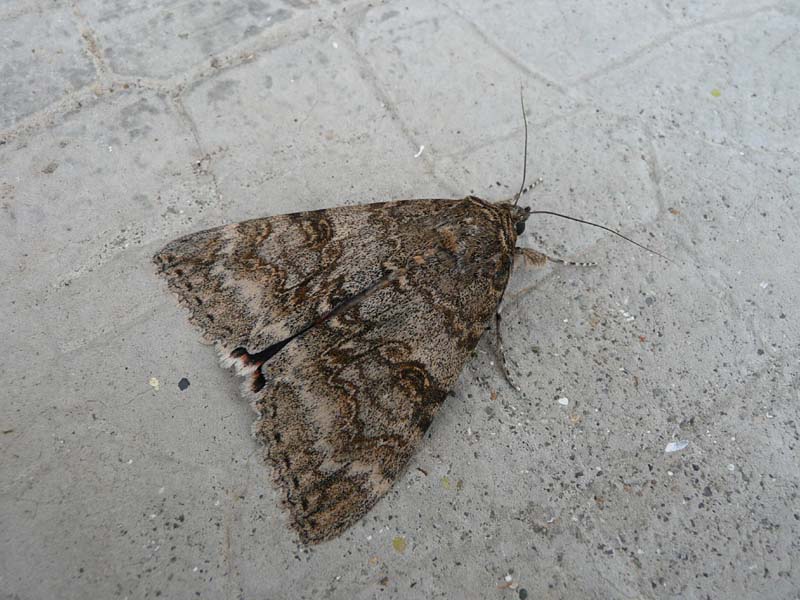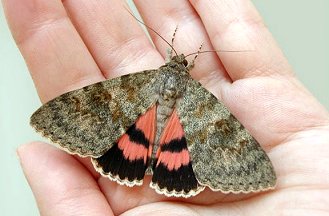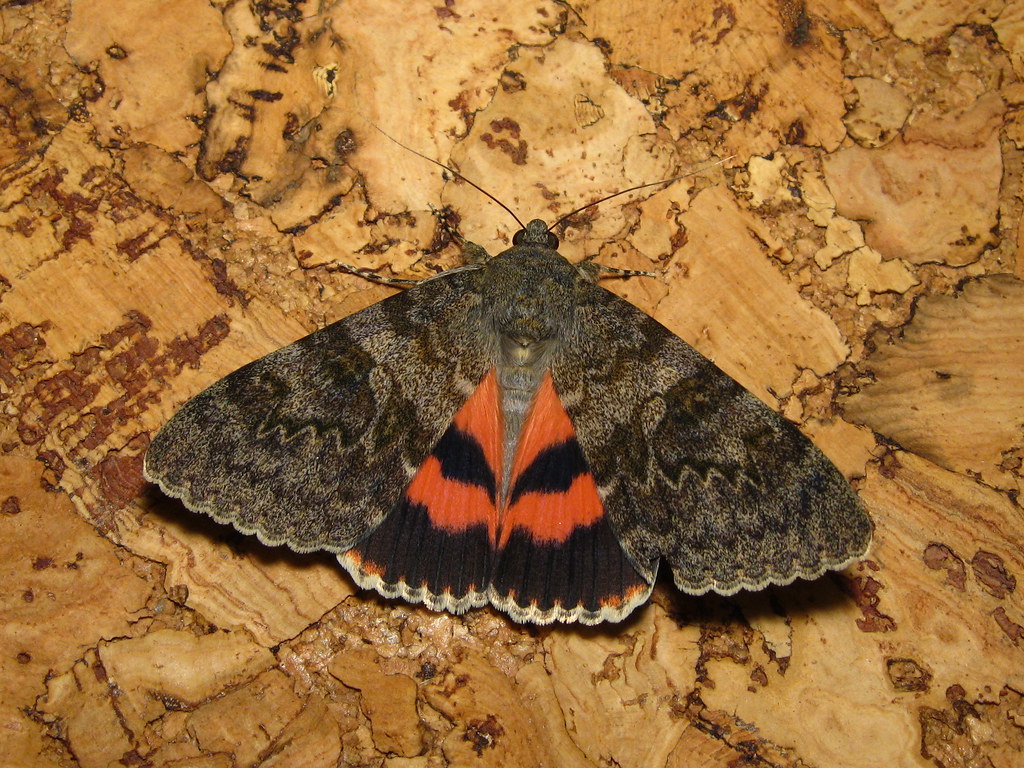Catocala elocata
Pappelkarmin ( Catocala elocata )
The Pappelkarmin ( Catocala elocata ) is a butterfly (moth ) from the family of cutworms ( Noctuidae ).
- 5.1 Notes and references
- 5.2 Literature
Features
Butterfly
The moths reach a wingspan of 80-86 millimeters. For the latter type is slightly larger than the very similar red Underwing (Catocala nupta ). The fore wings are brownish gray with partially indistinct drawing. Only the black-colored and bright -scale outward outer transverse line stands out clearly. The hind wings are vermilion, but somewhat duller than the Red ribbon and have a wide black Saumbinde and a little wavy, black middle binding. Striking is a spiky bulge in the Saumbinde. The hem is mottled reddish at the tip of the hind wings.
Egg, caterpillar, pupa
The hemispherical egg is reddish gray and has a broad, purplish band, which is divided by a white- yellow band. It also has about 35 strong longitudinal ribs. The Mikropylzone has a whitish or reddish color.
Adults caterpillars are gray or brownish in color and equipped with dark bars. Specific type are three brown back stripe, which are equipped with small, yellow warts. On the eighth segment is a black outlined yellow transverse ridge, on the eleventh segment are two yellowish, black -lined and curved transverse spots visible.
The slim doll shows a stem-like cremaster.
Similar Species
Besides the Red ribbon resemble those of the butterfly also home to southern Spain and North Africa Catocala oberthueri. This species can be distinguished by the somewhat broader wings and in particular by the evenly rounded broad black Saumbinde of the hind wings.
Geographical distribution and habitat
The species is widespread in southern Central Europe, in North Germany it is rare. Individual finds in England and Scandinavia are probably due to immigration. In the east it has been demonstrated to the Urals, Caucasus and Elburz Mountains. In the Southern Alps, it rises to a height of 800 meters. It also occurs in North Africa. Preferred habitat is the shores of rivers, ponds, streams and lakes, but also parklands and green valleys.
Way of life
Main flight period of moths are the months of July to October. At night they fly artificial light sources, including street lights on. The moths drink means of their proboscis occasional tree saps and can - like all ribbon types - easily with a bait, such as a fermented mixture of honey and beer, are attracted. The caterpillars feed preferentially from the leaves of various species of poplar (Populus ). They develop between May and July. Pupation takes place between spun leaves. Overwintering stage is the egg.
Endangering
In Germany, the species was formerly even in the middle of big cities like Berlin and Stuttgart, sometimes numerous, now she is on the red list of endangered species in category 3 (endangered ) out.










